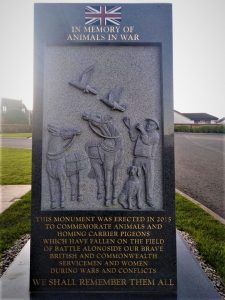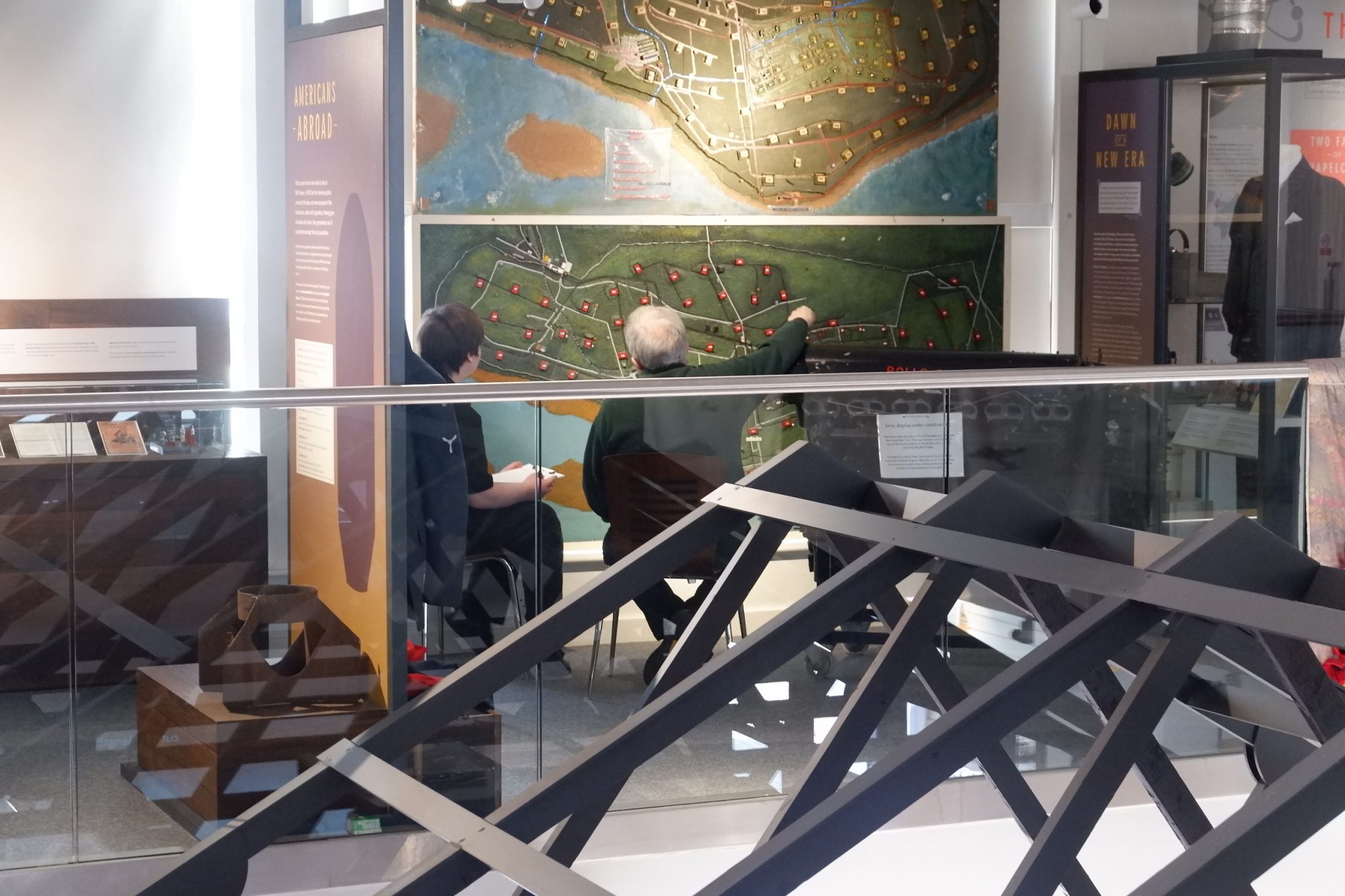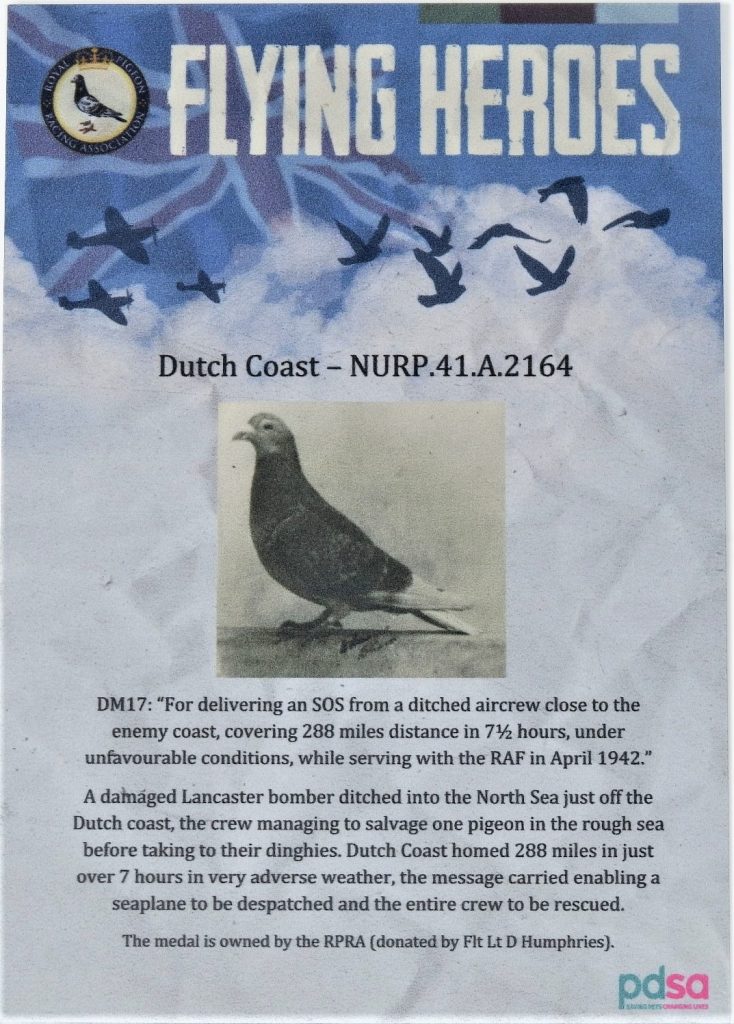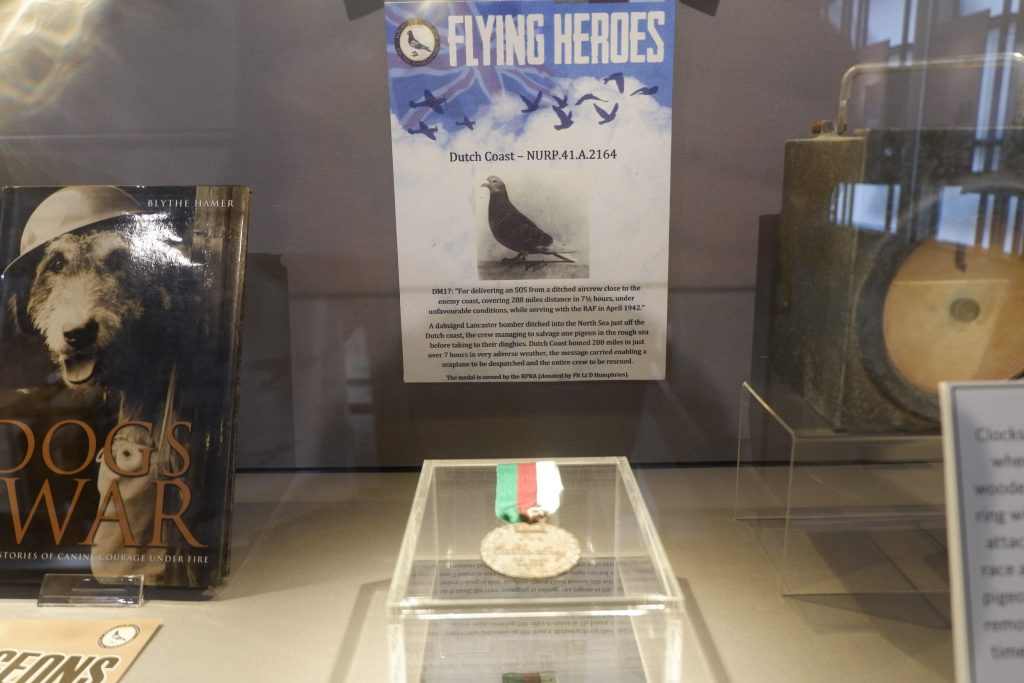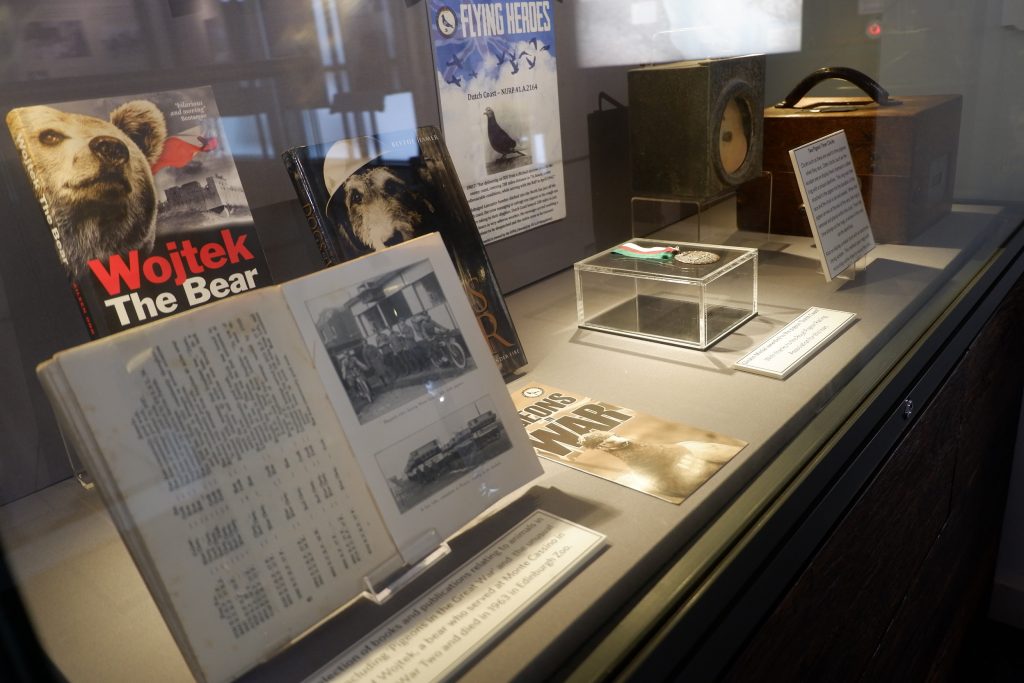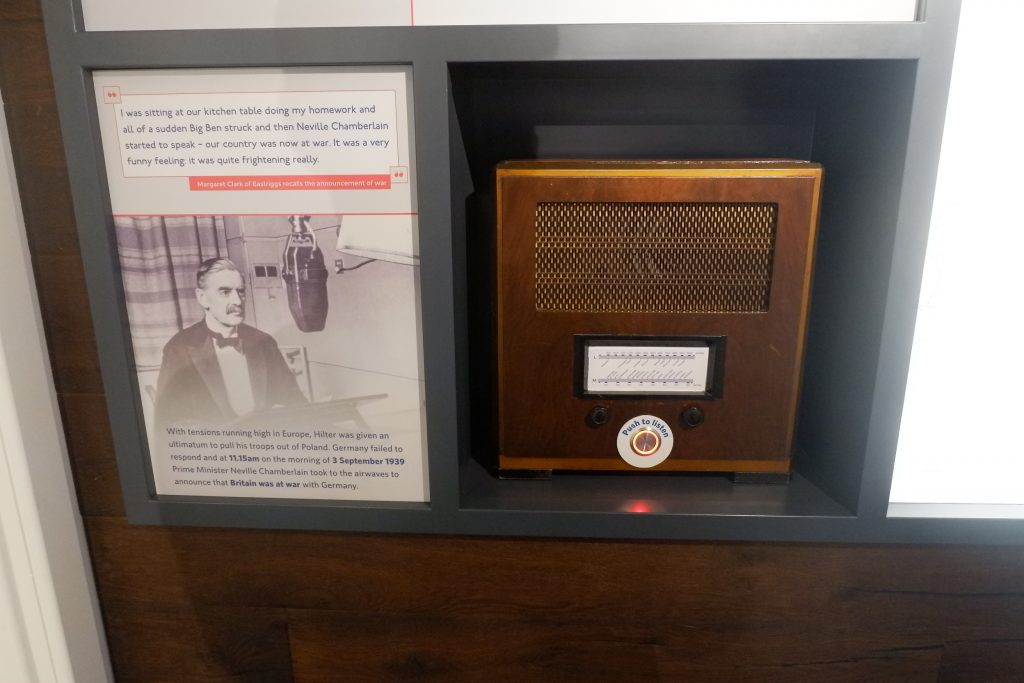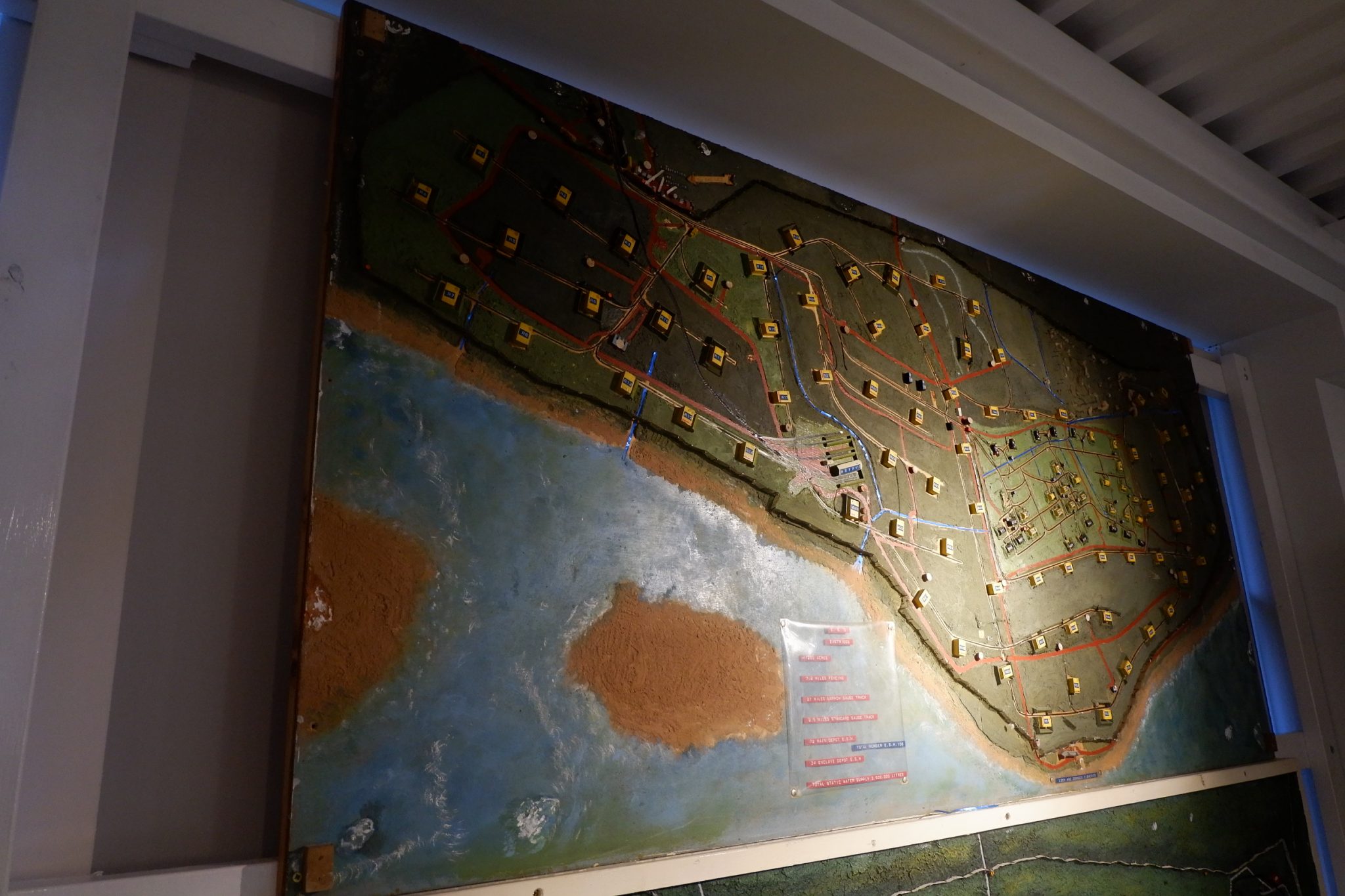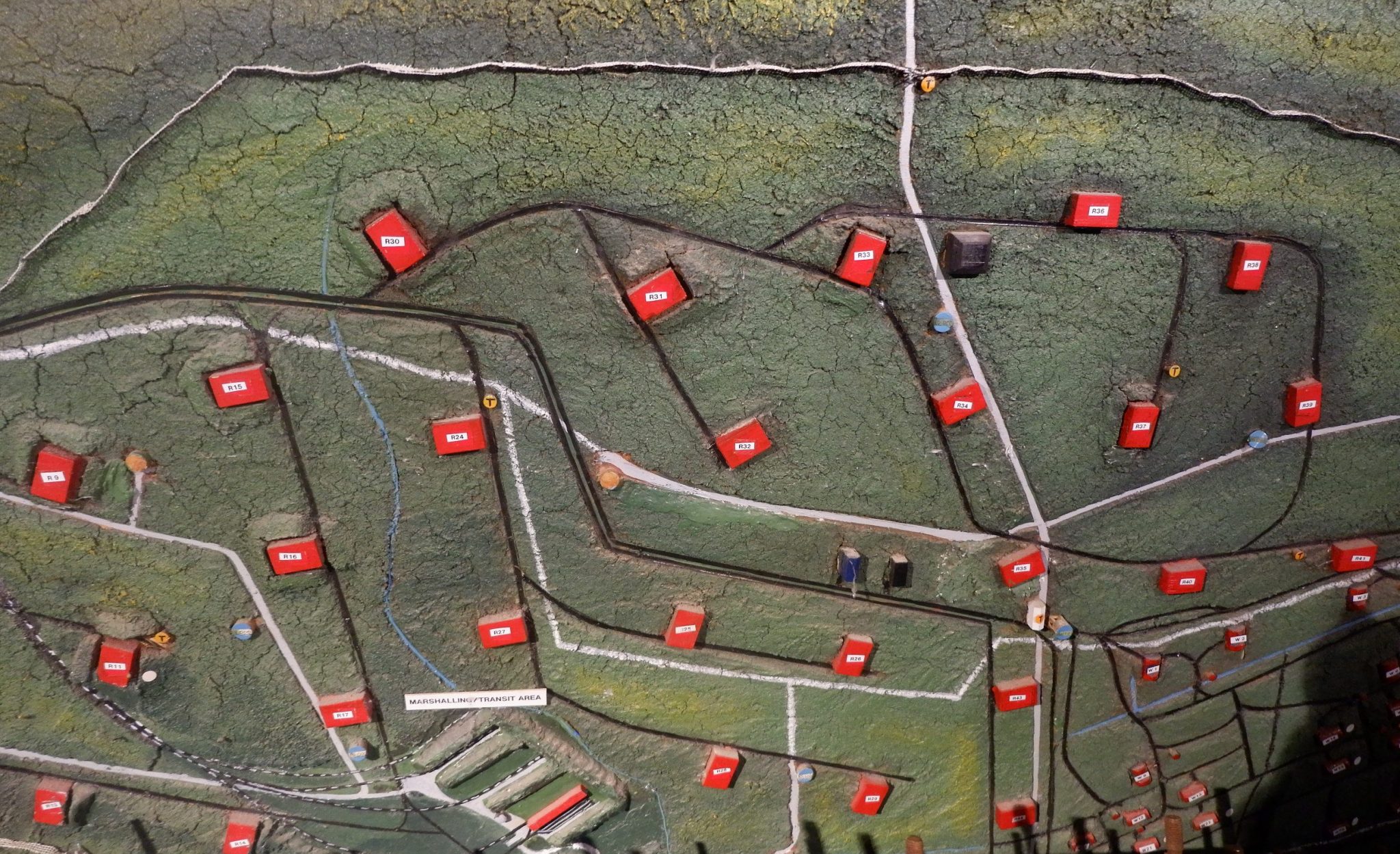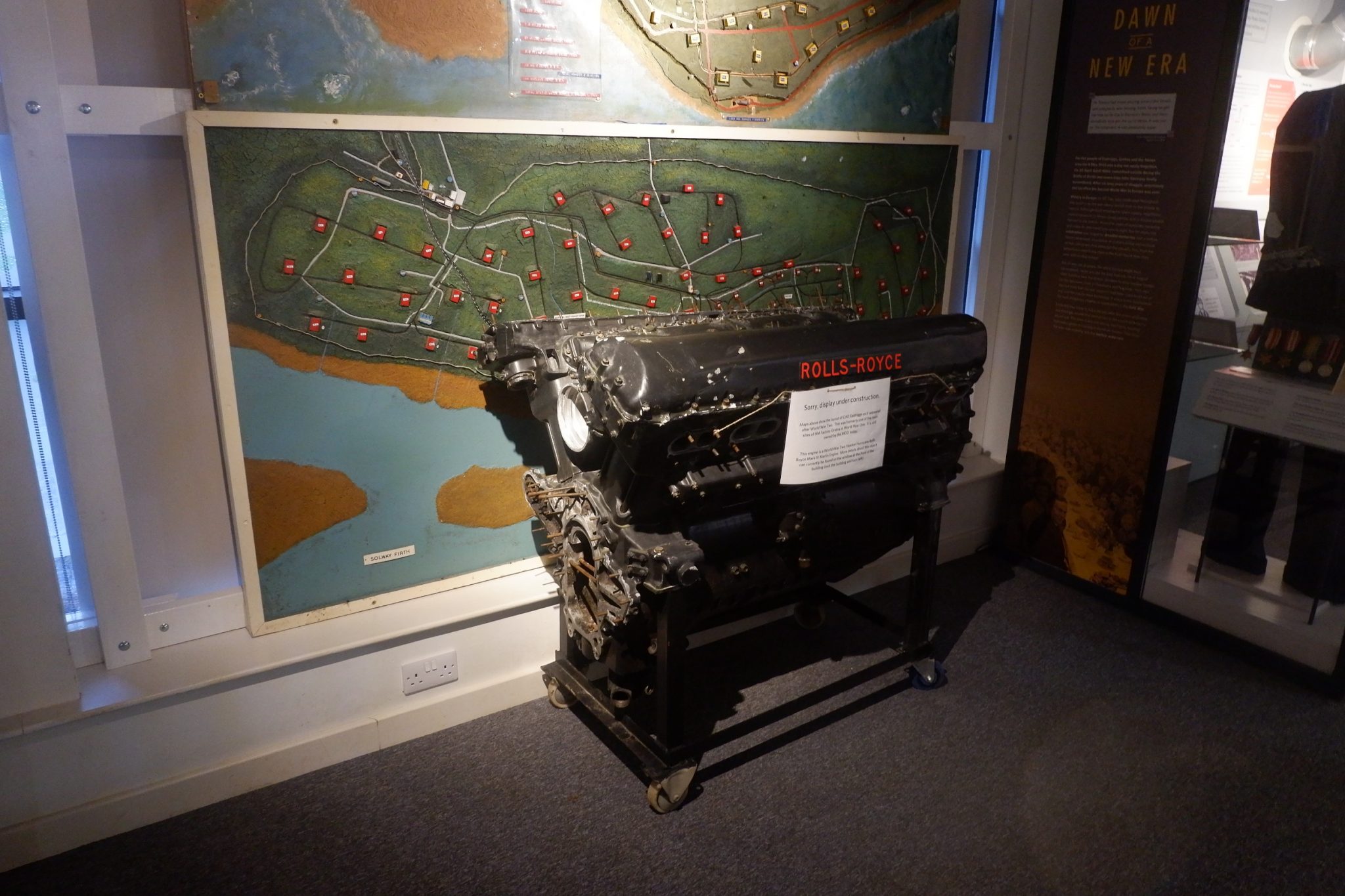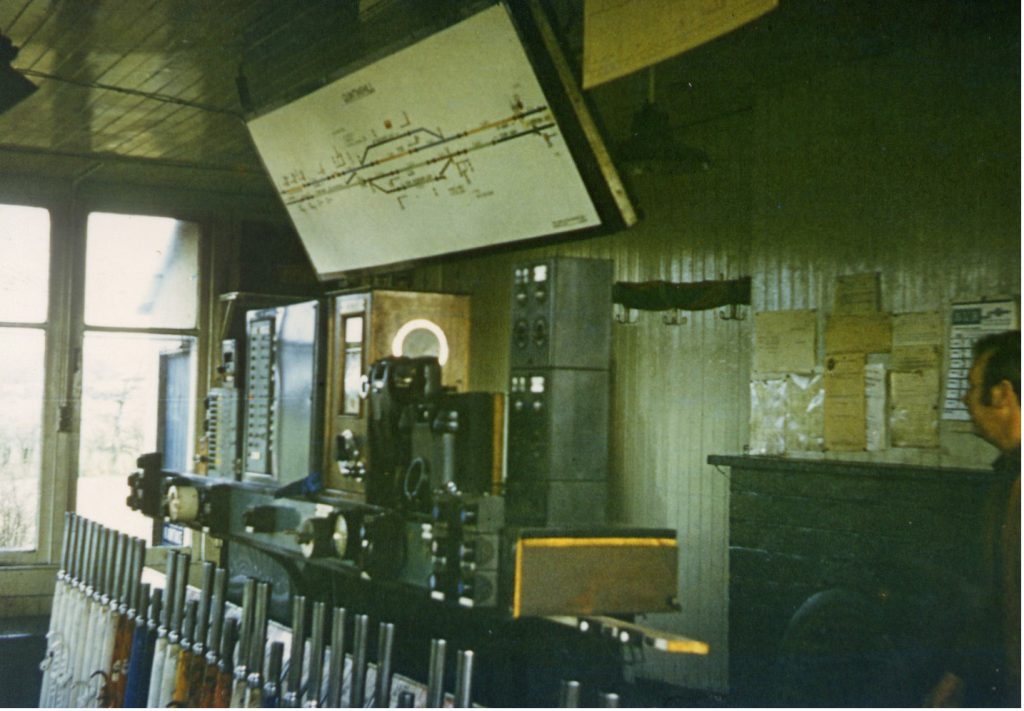
This article was written by Alastair Ritchie, who is one of our young volunteers. He recently completed The Prince’s Trust Award while volunteering in the Museum.
Ammunition Line Display
A while ago the museum was kindly donated 2 rollers and 4 trestles which we believe were used at the Eastriggs or Longtown depot. Since then we have sought to find a place for them, which we have now found (thanks to Neil McGarva for this suggestion). The items have been arranged in a way which will help to demonstrate their use, under the stairs in front of the window so it will be something for people to see when coming in from the car park or walking round the building.
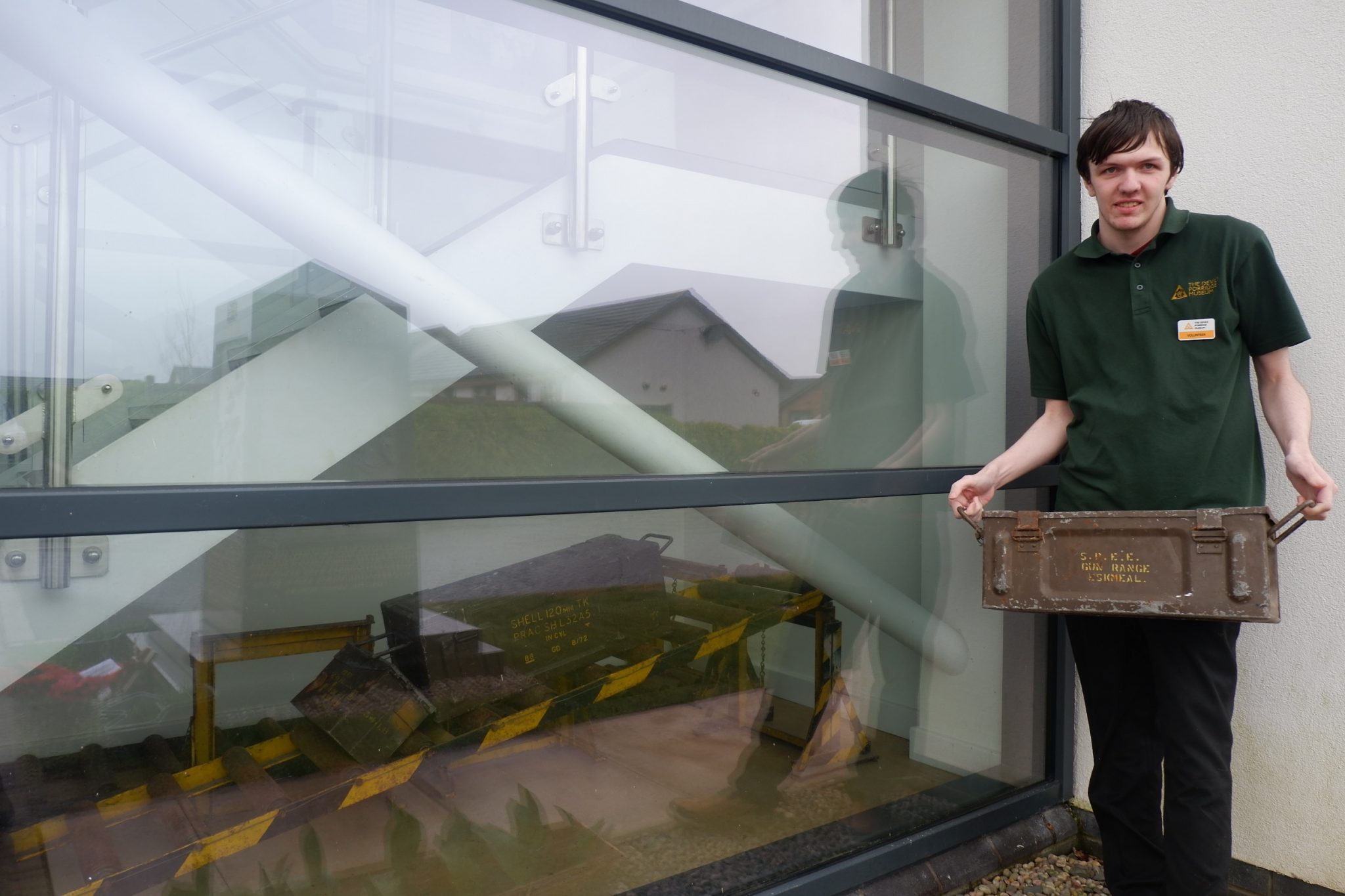
Alastair near the display (which is hard to photograph due to being behind glass). He is holding an ammunition storage box.
Thanks to the efforts of our volunteers Alastair and George along with Digital Marketing Modern Apprentice Morgan, the area has been cleared, cleaned and arranged to ensure it both looks good and gives some insight into how these items might have been used.
If you are interested in some more information on our display then here are a few facts about it…
-
The rollers were used in both WW1 and 2 (some would have been mechanised by the Second World War though) to assist in moving all types of ammo, firstly from the train to the magazine and secondly from one part of the factory to another.
-
The rollers were able to make moving large amounts of tank shells, bullets of all types, artillery shells, bombs though these were limited in type and navy shells more efficient.
-
In order to improve the rollers longevity they were made very durable, requiring little maintenance beyond the occasional greasing and replacing of the yellow and black paint which could easily be done by the women and men who worked with them.
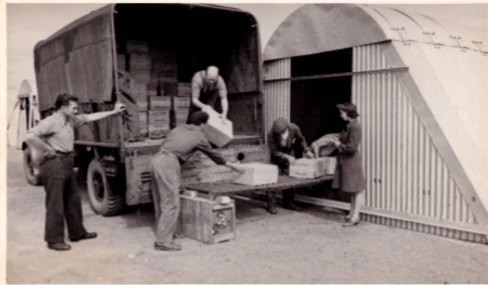
A group of people of load their crate onto the line that then leads into storage where it will stay until use.
-
Rollers could also be set up in long lines that might run up to 6 rollers long, allowing multiple teams to work on different parts, doing a varied tasks including….
-
placing empty open boxes onto the line
-
placing shells into boxes or removing ones from the line to be placed in storage or shipped out
-
sealing boxes
-
taking boxes off to be either placed in storage or on a train to be taken away for use
-
We have been told by Robin, a Trustee at the Museum (he worked within Eastriggs and Longtown depots for many years and is a former Inspector in the Ministry of Defence Police) that at the depot the process was referred to as “hand-balling” by some staff.
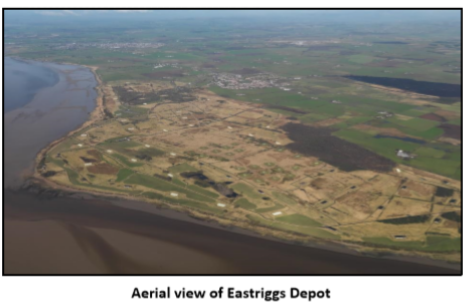
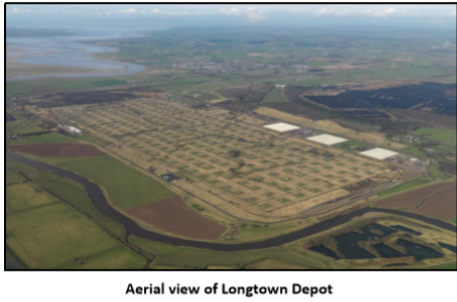
-
The rollers were a earlier version of the modern assembly lines without power and were used throughout the depot until the introduction of forklifts and other modern equipment.
-
In total the Rollers could hold somewhere between 13-15 tons which was vital as the Eastriggs depot could house up to 10–30,000 tons of material while Longtown could hold almost twice that amount as it was split between the COD (Central Ordnance Depot) which stored inert material such as boxes and packaging for various forms of ammunition and the CAD (Central Ammunition Depot) which stored various types of small arms to artillery shell ammunition.
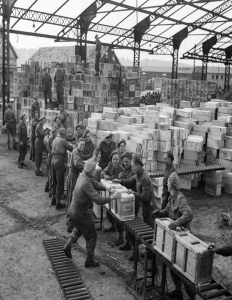
Group of worker using multiple rollers to assist them in moving crates around. This was essentially the rollers job to make moving heavy object safer, easier and most importantly faster.
The following book may be of interest if you would like to know more about the depots and the local area in World War Two:
After this article was published, a member of the public came forward with the following information and photographs, we thank him for sharing this with us:
-
The beginning of the process in what was known as the In-Transit this is where the ammunition/explosives are received into the building
-
Operatives would breakdown the pallets and load the containers/boxes onto the rollers and they would then be pushed through a hatch into the Process area where Ammunition Examiners would carry out various tasks:
-
Safety Inspection
-
Modification
-
Repairs
-
A pedestrian gate in the rollers where examiners could work on both sides of the rollers
-
Once this was done the containers/boxes would be moved along the rollers to the Out-Transit, here operatives would add markings
-
The rollers were used in all types of industry including the ships for deep sea dumping
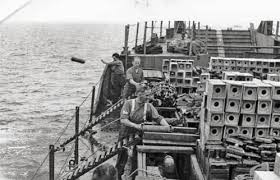
Just after the war some of the excess ammunition was thrown into the sea
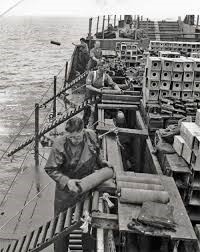
This process was known as Deep Sea Dumping fortunately it is now Banned
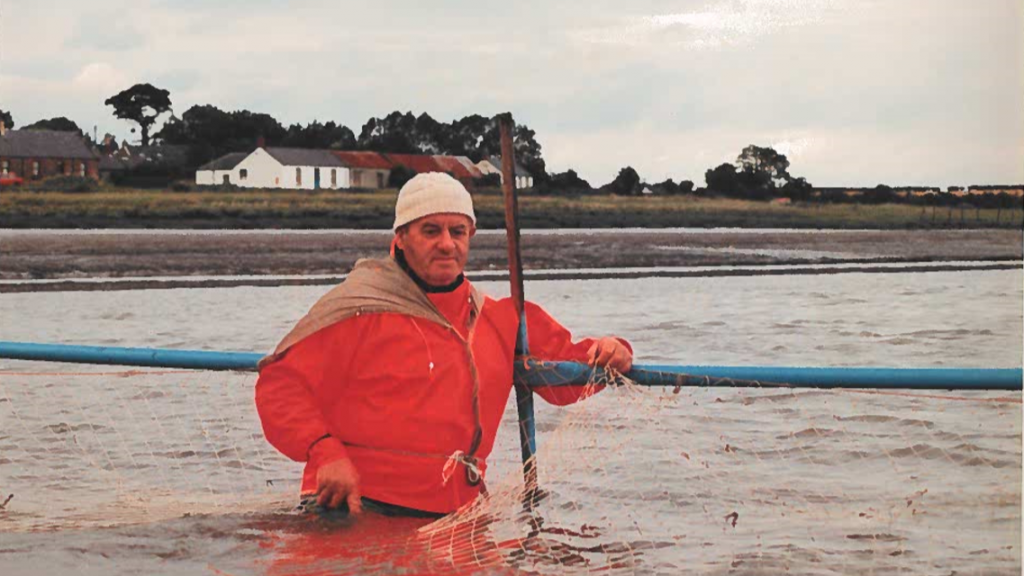
One of the Great things about having an exhibition on display is the things that it leads to. Our current exhibition in Haaf Net Fishing (which is on display until April 1st), has generated a lot of interest (from people in Cumbria as well as people on the Scottish side of the Solway). So far we have had object donations, objects on loan and on display for our Object of the Month Display and now we have had photographs and film footage shared with us.
The photo above shows a Haaf Netter at Loch and Dornock which is near the old HM Factory Gretna site and not far from Eastriggs, where the Museum is located.
These videos were shared with the Museum by Annan Museum and make interesting viewing:
https://www.britishpathe.com/video/solway-fishing-issue-title-right-dress/query/fishing+solway
https://www.youtube.com/watch?v=OGlzNTWtC7
https://www.youtube.com/watch?v=WyfKrvHGRGl
Thanks to everyone who is sharing things with the Museum – we really appreciate it!
For more information on our Haaf Net Exhibition see: https://www.devilsporridge.org.uk/haaf-net-fishing
To purchase books or other items relating to Haaf Net Fishing, visit our online shop: https://www.devilsporridge.org.uk/shop-online
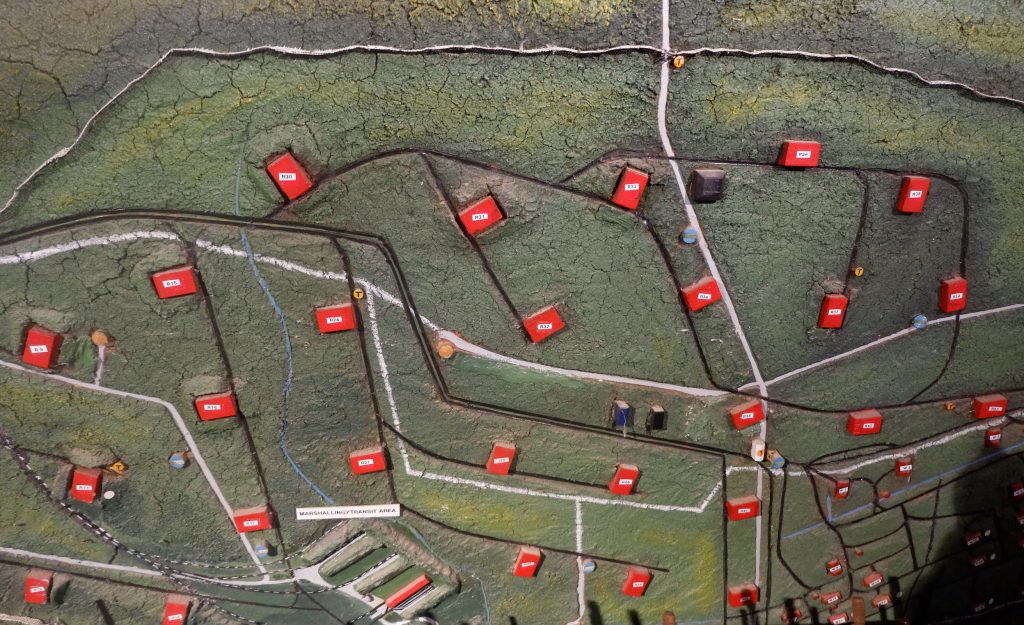
Yesterday, I spoke to Robin who is one of our volunteers and a Trustee at the Devil’s Porridge, about a new map display of the Ammunition Depot in Eastriggs. Robin had previously worked in the depot as an Inspector in the Ministry of Defence Police (MDP). He was the Officer in charge of the MDP complement which policed the Depot at Eastriggs and Longtown and has extensive knowledge of the base.
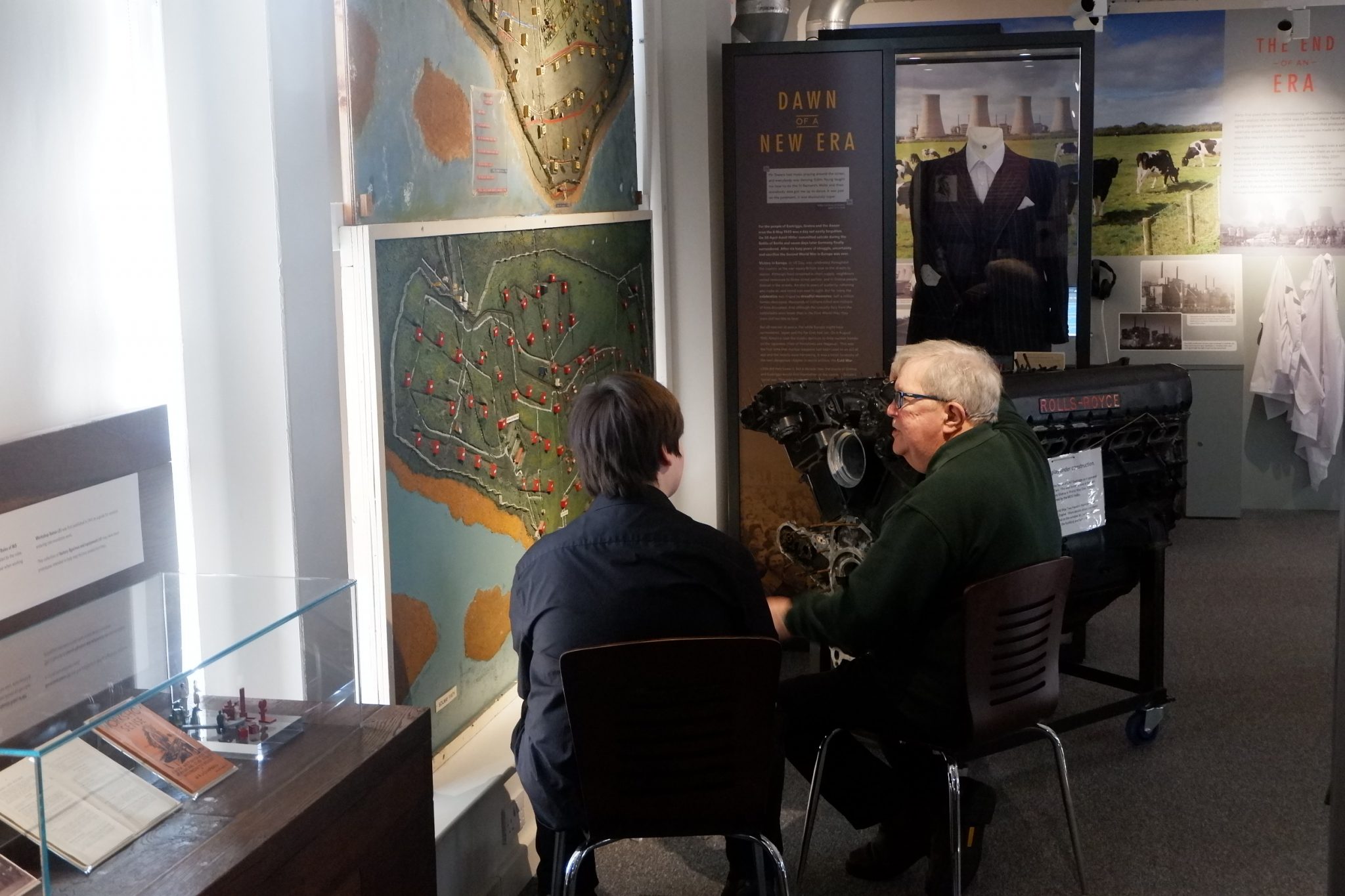 He told me that the depot was primarily used for the storage of ammunition such as rockets, bombs, missiles, and vast amounts of bullets. He then went on to explain that the depot is full of buildings called ESH (Explosive storehouses), used to store the ammo.
He told me that the depot was primarily used for the storage of ammunition such as rockets, bombs, missiles, and vast amounts of bullets. He then went on to explain that the depot is full of buildings called ESH (Explosive storehouses), used to store the ammo.
“An Explosive Storehouse, is a building designed to minimise the damage to the surrounding area if the ammo explodes. The walls are made of 4” of brick, while the roof is made of 12” of concrete and the whole building is surrounded by a large dirt and concrete mound called a traverse. If the ammo inside explodes, the walls will collapse causing the concrete roof to fall down onto the fire, which will suffocate the fire. However, the explosion that broke down the walls could cause what’s called a chain reaction setting off all the other ESH to explode. That’s why the traverse is surrounding it, in theory, it will block the explosion reaching other ammunition stores.”
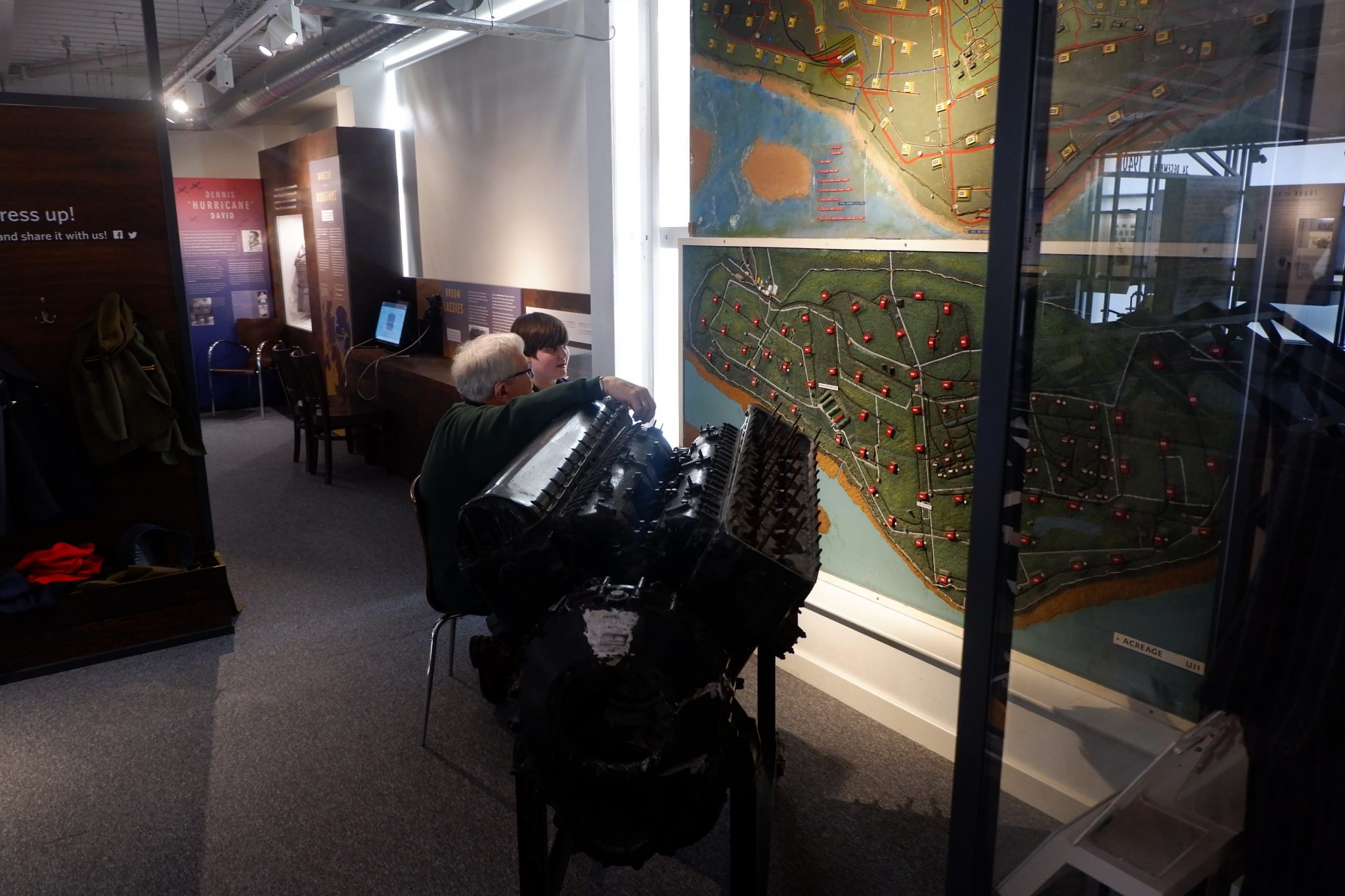 I went on to ask just how many ESHs there are in the depot.
I went on to ask just how many ESHs there are in the depot.
“Well, there are 72 in the main depot, spaced evenly apart, and another 34 in the enclave depot. The Enclave depot has been there since the first world war and the main depot was built around it.”
“Supplies would arrive mainly via train, on the standard gauge track (marked in black with white lines) at the main gate and would be delivered directly to the Marshalling or Transit Area. The train would arrive at a double platform where its cargo would be transferred to a train on the narrow gauge railways. The train with the cargo would then follow all 27 miles of the narrow gauge tracks (marked in black on the map) to each ESH arriving at R1, followed by R2 and so on. This train would also return with cargo gathered from the ESH and deliver it to the Transit area for transport out of the depot. Deliveries via lorry would be taken to the Road loading Area, where it would then be transported via the roads to the correct ESH.”
I then asked Robin what his role at the depot was.
“I was the Officer in charge of the MDP complement which policed the Depot at Eastriggs and Longtown. I used to patrol the perimeter of the depot with the dog handlers. The fence was 7.2 miles long, we would check for holes in the fence and intruders. I would also work the checkpoint at the main gate confiscating contraband like phones, cigarettes, lighters and such.”
Written by Connor Rayson, young volunteer at the Museum on a placement with us from Lowland Training Services.
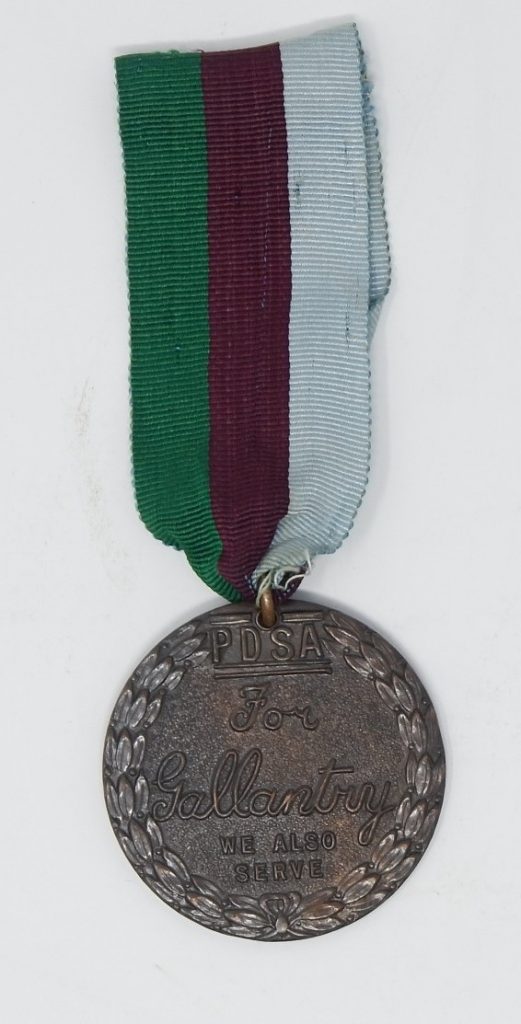
We’re very happy to have a Dickin Medal on display in the Museum for the next 6 months. This is one of only 3 on display in the country and one of only 71 Dickin Medals in existence. This particular medal was awarded to a pigeon called Dutch Coast, he was on board a Lancaster Bomber which went down in the North Sea in 1942. He flew 288 miles over 7 hours in terrible weather. He delivered his message and the lives of all the crew were saved as a result of is actions.
In 1943, Maria Dickin, the Founder of the People’s Dispensary for Sick Animals (a charity known as the PDSA) created the Dickin Medal to honour the work done by animals in World War Two and to recognise their conspicuous gallantry or devotion to duty. Since its introduction in 1943, the Dickin Medal has been awarded just 71 times: 31 dogs, 32 World War Two messenger pigeons, three horses and one cat have been awarded. We are very honoured to have the Dickin Medal here on loan to The Devils Porridge Museum from the Royal Pigeon Racing Association.
Animals have been used in war for thousands of years. Over 16 million animals served in the First World War. Cats and dogs were trained to hunt the giant rats that infested the trenches. By 1918, 8 million horses would lie dead in the mud, many next to soldiers they served with. The use of cavalry in war declined after World War One but animals remain an important part of the Armed Forces.
The War Memorial which we have outside the Museum was gifted to us by the Animals in War Group, Carlisle in 2015, as a lasting permanent reminder of the enormous sacrifice made by animals in war.
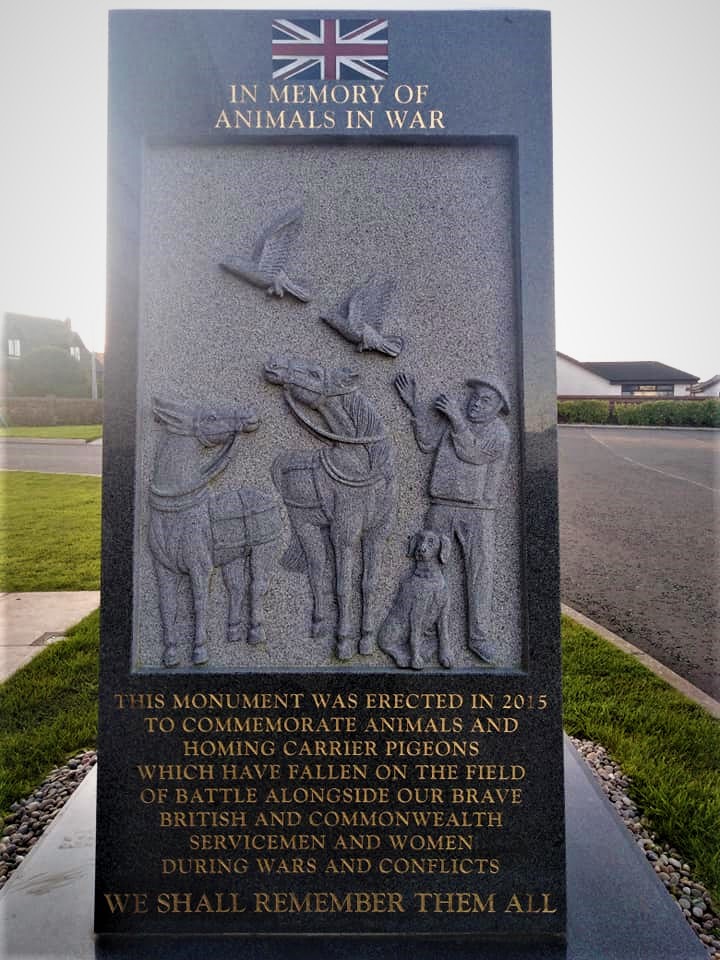
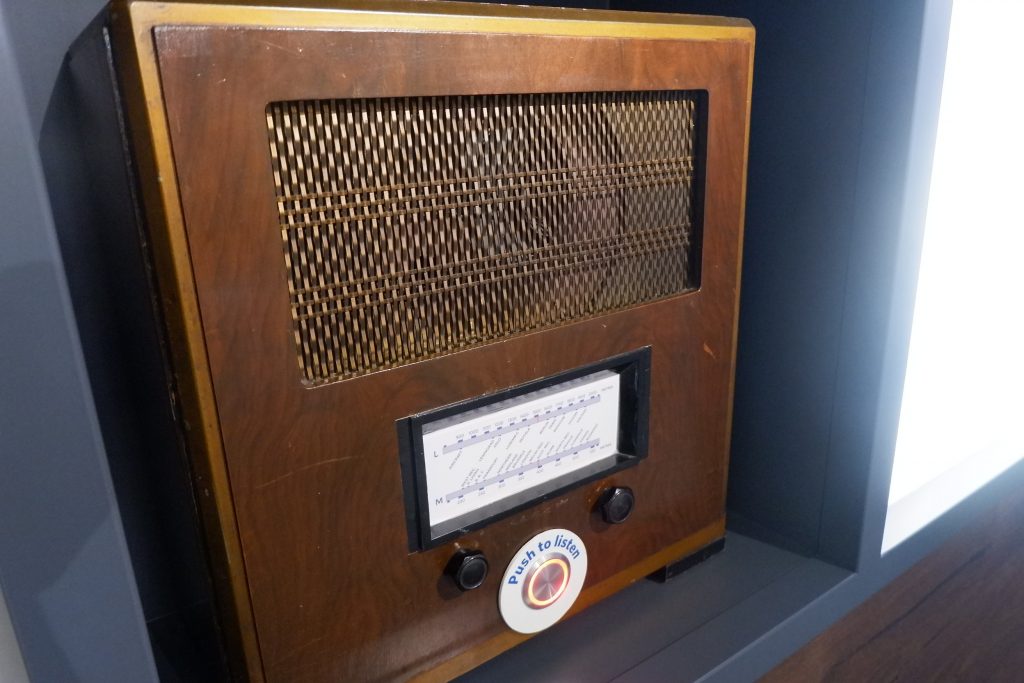
This display is the start of the timeline of the Second World War which is located on the top floor. This display follows on from a timeline of pre Second World War which explains the build up to the conflict.
The display includes a voice extract from Neville Chamberlin (who was Prime Minister at the time) when he took to the airwaves to announce to the country that Britain was at war with Germany. It also includes a quote from a local woman named Margaret Clark recalling the moment the announcement was made, “I was sitting at our kitchen table doing my homework and all of a sudden Big Ben struck and then Neville Chamberlin started to speak – our country was now at war. It was a very funny feeling, it was quite frightening really.”
Rumours of a new munitions factory at Gretna had been circulating since 1937. In a strategic move the government decided to spread the risk by building a number of smaller factories. Three months after the war was announced, His Majesty’s Inspector of Explosives gave the go ahead to build Powfoot Munitions Factory on the Solway Firth, just 8 miles (12km) away from where the Museum is now.
The map below shows some of the key points which were used during the Second World War in the local area such as RAF Annan, ICI Powfoot and many of the homes used for evacuation of children.
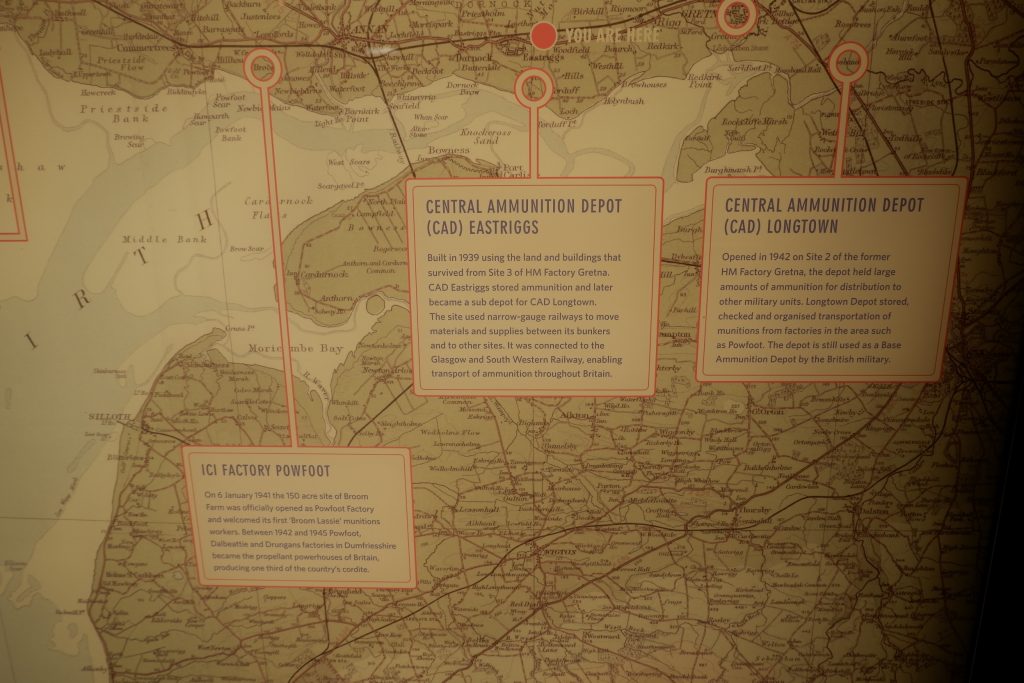
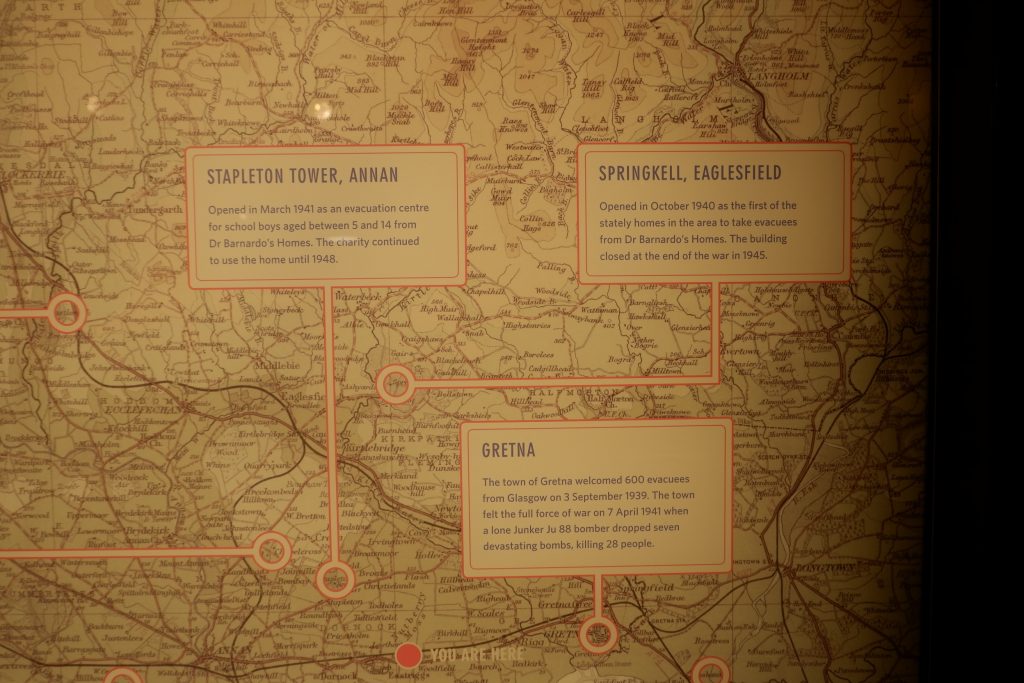
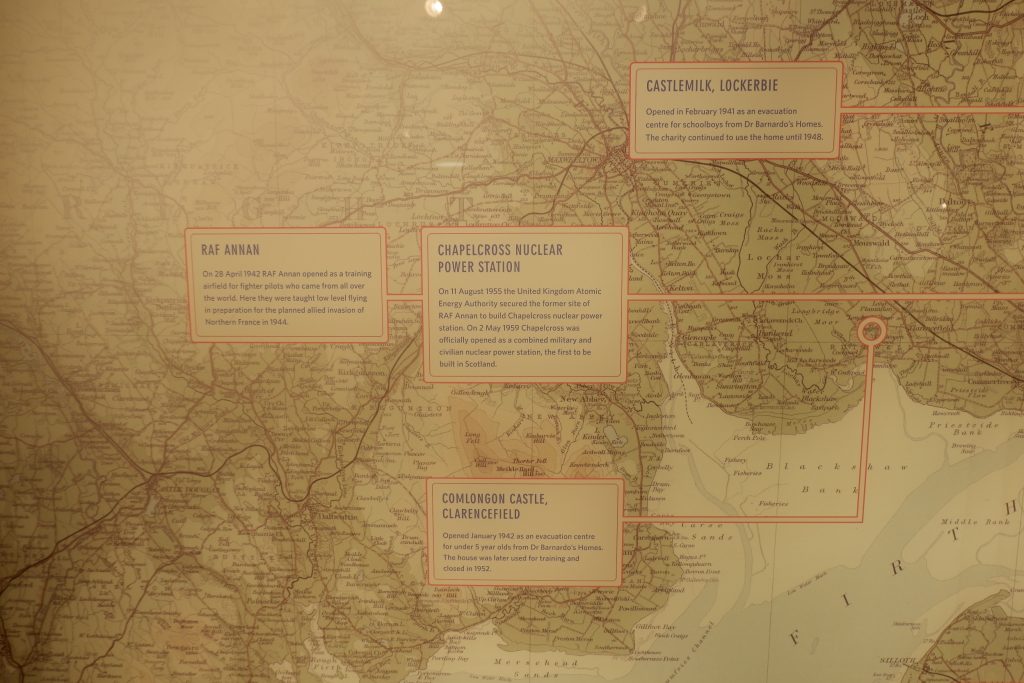
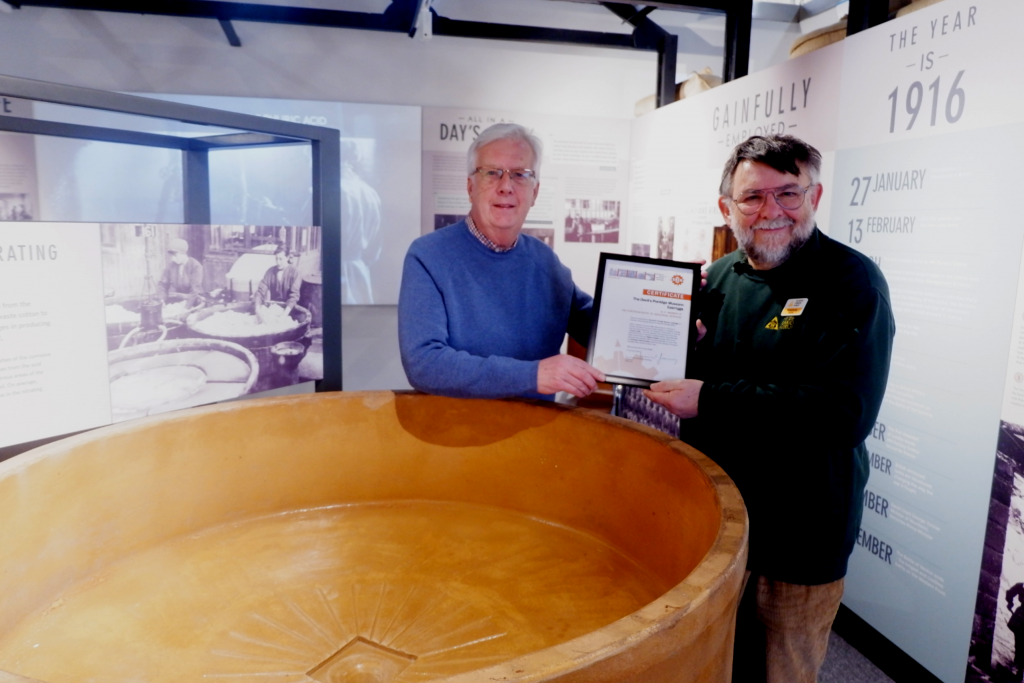
The Devil’s Porridge Museum was very pleased to join the prestigious European Route of Industrial Heritage (ERIH) at the end of 2019. This weekend, we were visited by Jonathan, the British Representative of this organisation. He thoroughly enjoyed his visit to the Museum and was most impressed by its quality and the originality of the history it recounts.

Jonathan from ERIH presents Museum Chairman Richard Brodie with a certificate of membership for display within the Museum.
Jonathan met with Judith, the Museum Manager and Richard, Museum Chairman to discuss opportunities for the Museum to get involved in ERIH projects and programmes and ways in which ERIH can help promote the Museum across Europe. We hope to work with this organisation more in future. For more details on ERIH (including a page on The Devil’s Porridge Museum), see: https://www.erih.net/
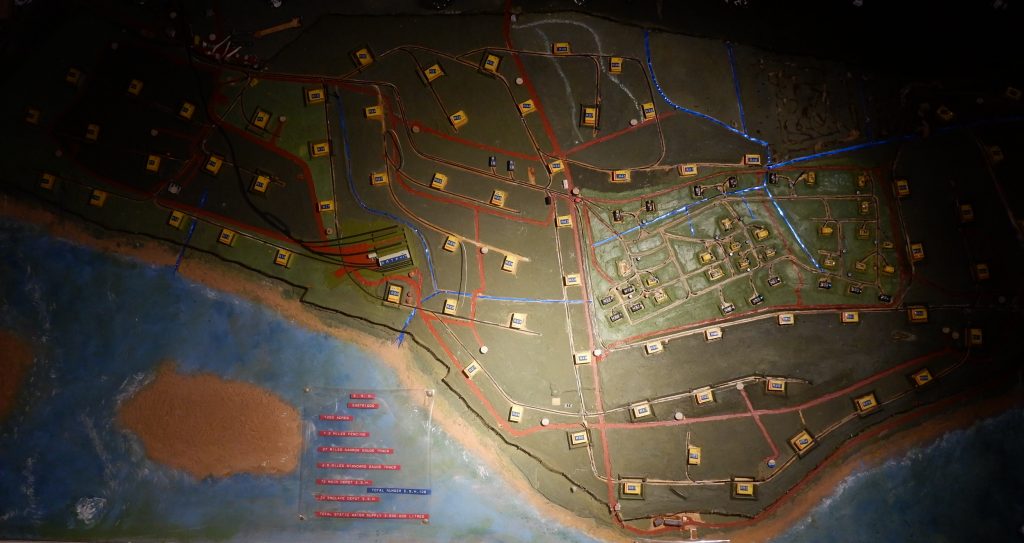
We have a new display within the Museum showing the Eastriggs depot after World War Two. This site was originally HM Factory Gretna (the greatest munitions factory on earth in World War One). After the War, most of the Factory plant was sold off but the land was retained by the MOD (who still own it today as ESD Eastriggs).
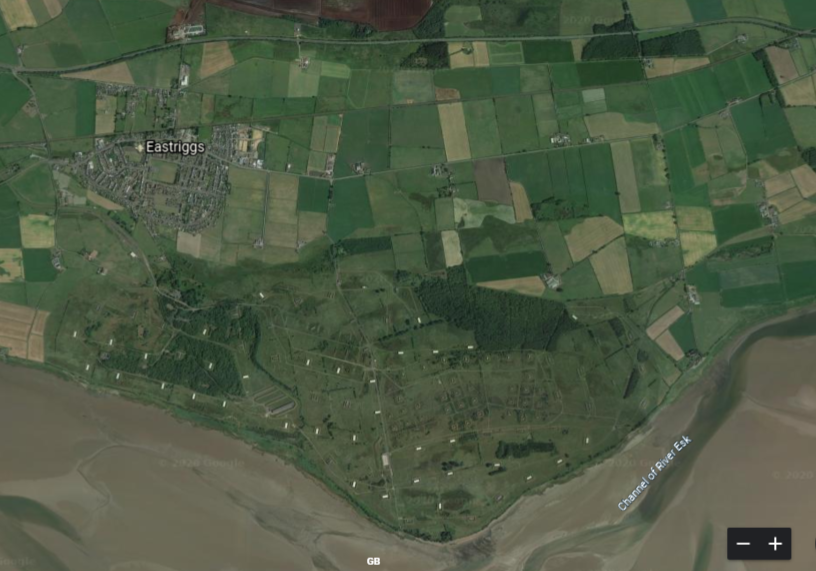
This aerial photograph, from Google Earth, shows Eastriggs (where the Museum is located) and the site of ESD Eastriggs on the Solway.
In World War Two, the site was used as a storage depot for weapons (we know some of the weapons from one of our local sites ended up in the USSR via the Arctic Convoys, for more detail see: https://www.devilsporridge.org.uk/world-war-two-ammunition-shipped-to-russia). These two maps show the Eastriggs site after that period and will surely bring back memories for any who worked there or has memories of Eastriggs and area at that time.
Also on display in this area of the Museum is a Hawker Hurricane Rolls Royce Mark III Merlin Engine which dates from World War Two.
Thanks to Neil and Graham for creating this display (and getting the engine upstairs which was a challenge!) and to Calum for these photos and the temporary sign on the Engine (permanent interpretation panels will go on display soon).
If you are interested in World War Two in this area, this book is a must: https://www.devilsporridge.org.uk/product/the-solway-military-coast-book
If you are specifically interested in the depots of Eastriggs and Longtown in World War Two, this may interest you (this booklet is contained within The Solway Military Coast book as a chapter so no need to purchase both): https://www.devilsporridge.org.uk/product/the-ministry-of-defence-depots-longtown-and-eastriggs
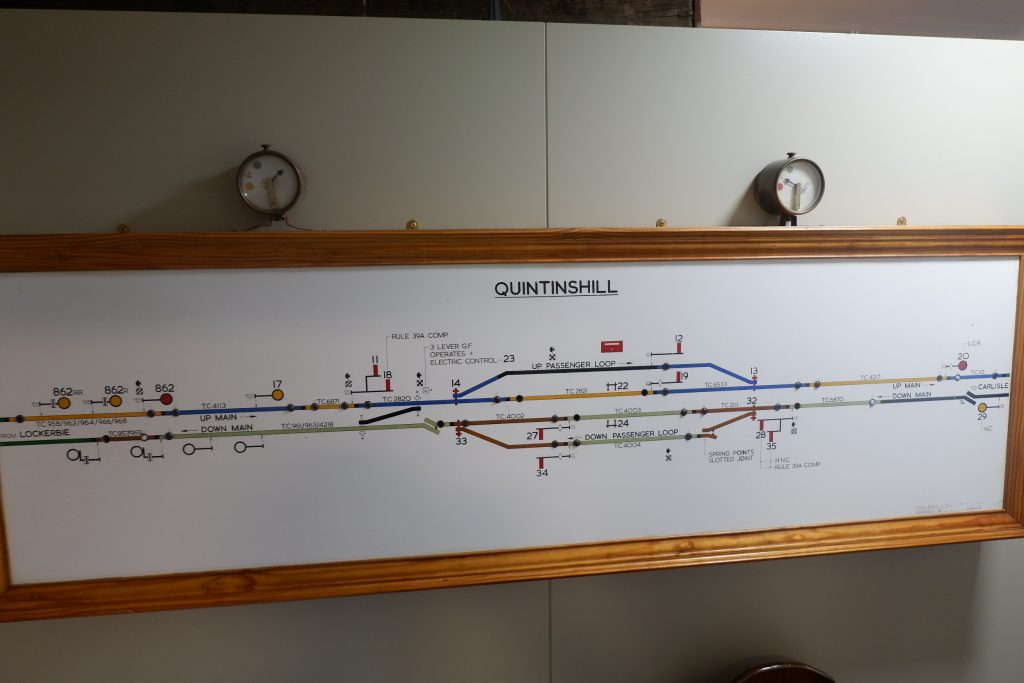
A new object was put on display at the Museum over the Christmas break, it is a Caledonian Railway Type CRS4 from Quintinshill signal box. It was on display there for many years and can be seen below.
The Signal box (below) was opened in 1903 and had 45 levers. This object became the last operational CRS4 type box working the West Coast mainline between Gretna and Glasgow. The signal box closed in 1973 and control went to the Carlisle Signalling Centre.
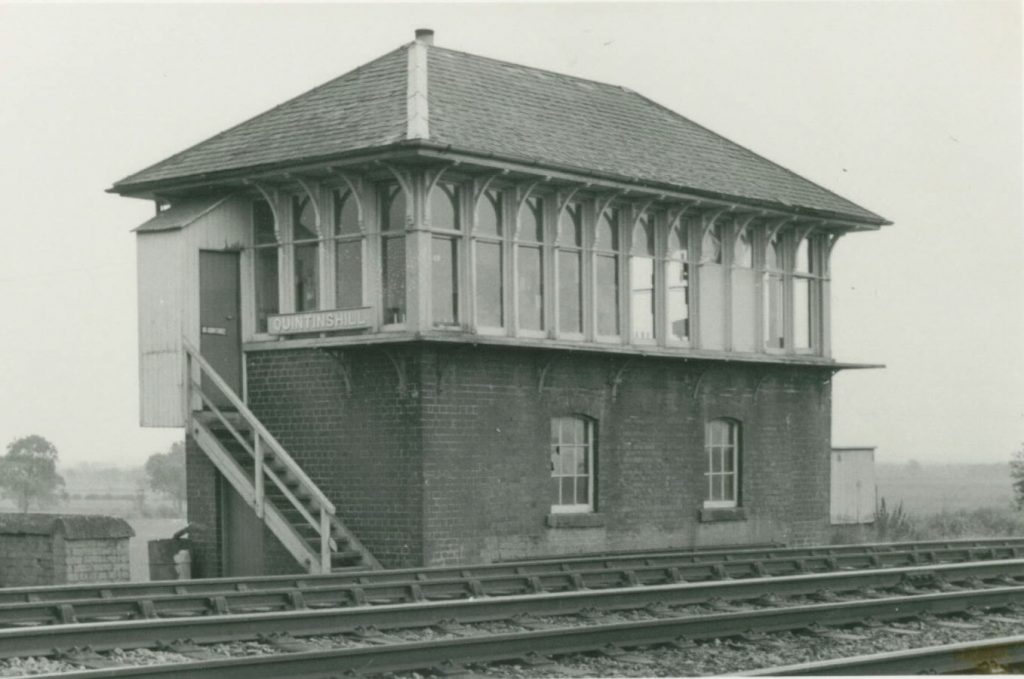
If you would like to know more information about Quintinshill see one of our previous articles here: https://www.devilsporridge.org.uk/ww1-bugle-from-quintinshill
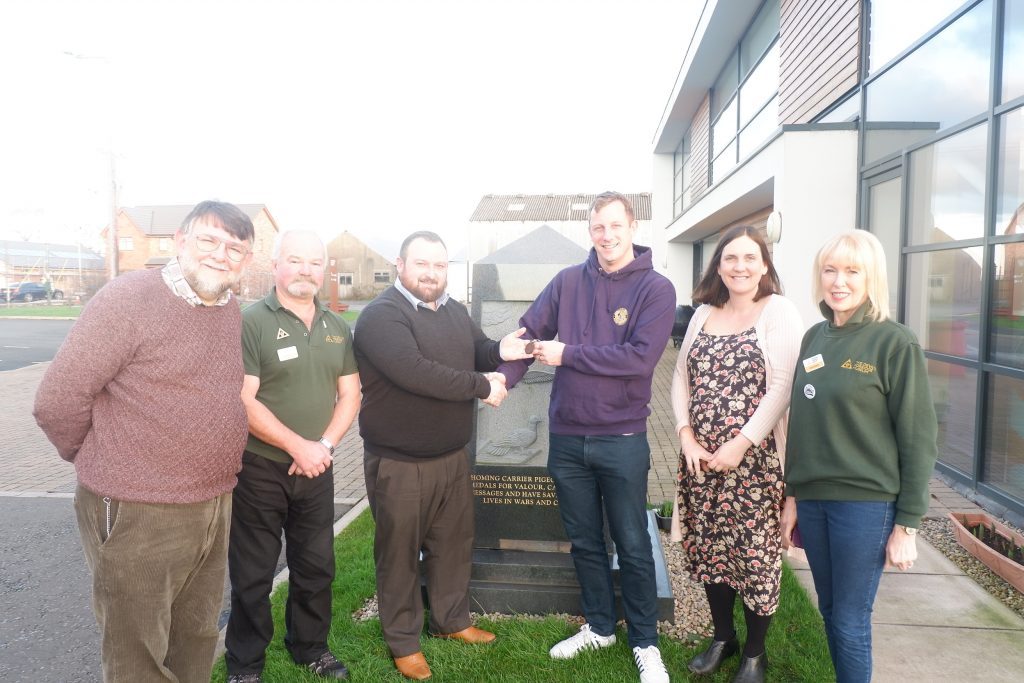
The Devils Porridge has a fantastic new item on loan – a Dickin Medal. The Dickin Medal was created by Maria Dickin, founder of the PDSA in 1943 to recognise the brave contributions made by Animals in War. It has been awarded just 71 times – 31 dogs, 32 World War Two messenger pigeons, three horses and one cat have been awarded. The medal is on loan from the Royal Pigeon Racing Association (the RPRA) and is one of only three medals they have loaned from their collection across the UK. The medal commemorates ‘Dutch Coast’ a pigeon who delivered an SOS from a ditched air crew in 1942. The pigeon covered 288 miles in 7.5 hours. The entire crew were rescued as a result of this action.
“The Museum has a memorial outside to commemorate Animals In War” said Judith Hewitt, Museum Manager, “and last year members of our Young Historians Club worked with the RPRA and the Carlisle Animals In War group to curate an exhibition about all the animals who also served. We are delighted to be able to bring this rare object to our region and to share it with our visitors. It will go on display within the next few weeks and will offer something different for everyone (especially animal lovers) to see.”
